Introduction: Pull-ups are a true test of strength, endurance, and overall fitness. If you're aiming to get stronger and increase your pull-up reps, you're in the right place. But did you know that, according to a 2023 survey, only 8% of people can do more than 10 pull-ups in a row? The challenge is real, but the rewards are worth the effort.
In this blog post, we will walk you through a step-by-step plan to increase your pull-up reps, from building foundational strength to mastering advanced techniques. Whether you're just starting or you've plateaued, this guide, rooted in evidence-based strategies, will provide actionable tips and expert advice to help you level up your pull-up game.
We’ll cover:
The fundamentals of pull-up training
Proven strategies to increase reps
Common mistakes to avoid
How to integrate pull-ups into your routine effectively
By the end of this guide, you’ll have a structured plan tailored to improve your pull-ups, with a focus on strength, consistency, and technique.
1. Understanding the Pull-Up: The Key to Success
Pull-ups are more than just an upper body exercise; they engage multiple muscle groups, including the lats, shoulders, arms, and core. Achieving more reps requires not only building muscle but also perfecting your form and increasing overall endurance.
Muscle Groups Targeted:
Latissimus dorsi (lats): The primary muscles responsible for the upward motion.
Biceps and forearms: Support the pulling motion.
Rhomboids and traps: Help stabilize the shoulder blades during the pull.
Core: Engaged to maintain body tension and proper form.
Form is Everything: To build the strength necessary to perform more pull-ups, proper form is essential. It ensures that you target the right muscles and reduce the risk of injury. A well-executed pull-up can be the difference between plateauing and achieving your desired rep count.
2. Building a Strong Foundation: Core and Upper Body Strength
Before diving into more complex training routines, focus on building a foundation of core and upper body strength. Here's a breakdown of the key exercises and routines to increase your pull-up performance:
A. Assisted Pull-Ups
The Use of Resistance Bands or Machines
Resistance bands or assisted pull-up machines are a great tool for beginners. They help take off some of your body weight, allowing you to perform the movement more easily.
How to:
Attach a resistance band to the pull-up bar and place one foot or knee in the loop.
Perform the pull-up as usual, ensuring you maintain control of the movement.
As you gain strength, use thinner bands to reduce assistance until you can perform unassisted pull-ups.
B. Negatives (Eccentric Training)
Master the Descent
Eccentric training, or negative pull-ups, focuses on the lowering phase of the movement. This helps build the muscles involved in pull-ups.
How to:
Use a step or jump to get your chin above the bar.
Slowly lower yourself down, aiming for a controlled descent lasting 3–5 seconds.
Perform 3-4 sets of 5–8 reps.
C. Lat Pulldowns
Develop Lat Strength
The lat pulldown machine is a great way to develop the strength needed for pull-ups, especially for those who are unable to perform unassisted pull-ups yet.
How to:
Sit on the machine and grasp the bar wider than shoulder-width.
Pull the bar down to your chest while keeping your back straight.
Control the movement as you release the bar back up.
Perform 3 sets of 8–12 reps.
3. Progressive Overload: Gradually Increase Your Reps
To truly increase your pull-up reps, you need to gradually challenge your muscles. This is where progressive overload comes in—slowly increasing the difficulty of your workouts over time to encourage muscle growth and endurance.
A. Add Weight (Weighted Pull-Ups)
Once you can perform more than 10 pull-ups with good form, adding weight will help you push your limits and increase overall strength. Here’s how to implement weighted pull-ups:
Use a dip belt to attach weight or wear a weighted vest.
Perform pull-ups with added resistance, aiming for 3-4 sets of 5–8 reps.
Start with a moderate weight and progressively increase as you get stronger.
B. Increase Volume Gradually
If you're stuck at a particular number of reps, increasing your volume is a great way to push past a plateau. Instead of doing fewer reps with full rest, perform more sets of fewer reps, ensuring proper form throughout each set.
Example Routine:
Set 1: 5 reps
Set 2: 4 reps
Set 3: 6 reps
Set 4: 5 reps
Continue for 3–4 sessions per week, gradually increasing reps or sets over time.
4. Incorporating Pull-Ups into Your Routine
Consistency is key. Incorporate pull-ups into your training schedule while also focusing on other exercises to balance your fitness regimen. Here's a sample pull-up-focused workout plan:
A. Frequency
Beginner: 2-3 times per week.
Intermediate/Advanced: 3-4 times per week, incorporating different variations.
B. Full-Body Workouts
Pair pull-ups with exercises that target other muscle groups to ensure overall strength development. For example:
Day 1: Pull-ups, push-ups, squats, planks.
Day 2: Lat pulldowns, bench press, lunges, deadlifts.
5. Common Mistakes to Avoid When Doing Pull-Ups
To maximize your results, avoid these common mistakes that could hinder your progress:
Inconsistent Training: It's tempting to skip pull-up days, but consistency is crucial. Skipping workouts leads to slow progress.
Poor Form: Swinging or using momentum reduces the effectiveness of your workout and increases the risk of injury.
Not Progressing Over Time: If you don’t gradually increase the difficulty, you’ll plateau. Use progressive overload to keep improving.
6. Research & Sources
To reinforce the effectiveness of the strategies discussed, here are a few credible sources:
A 2020 study from the National Strength and Conditioning Association found that assisted pull-ups significantly improve the ability to perform unassisted pull-ups, especially when combined with eccentric training.
According to Men’s Health, progressive overload is the most effective way to increase strength and endurance, making it crucial for achieving higher rep counts in pull-ups.
Expert fitness trainers, such as those at American Council on Exercise (ACE), advocate for a balanced program combining compound lifts and accessory exercises like lat pulldowns to enhance pull-up performance.
These sources support the recommendations made here and highlight the importance of structured training, consistency, and gradual progression.
7. FAQ (Frequently Asked Questions)
Q1: How many pull-ups should I be able to do?
The average person can do 1-3 pull-ups, but with consistent training, most people can achieve 5-10 pull-ups after a few months. Elite athletes can do 15 or more.
Q2: Can I increase my pull-ups in one month?
With consistent effort and a structured training plan, it’s possible to increase your pull-up reps within a month, especially if you're focusing on building strength and practicing regularly.
Q3: Should I do pull-ups every day?
While pull-ups are highly beneficial, overtraining can lead to muscle fatigue and injury. Aim for 3-4 times a week with adequate rest between sessions to allow for recovery.
8. Conclusion
Improving your pull-up reps is a journey that requires dedication, patience, and the right approach. By following a structured plan that includes building foundational strength, progressive overload, and mastering technique, you’ll start to see significant improvements in your pull-up performance.
Remember, consistency is key. Stay focused on gradually increasing your reps while avoiding common mistakes, and you’ll be well on your way to mastering the pull-up.
Call to Action: Want to take your fitness to the next level? Check out our advanced training resources at Hamilton Home Fitness and start building your dream body today. Don’t forget to share your progress with us!





